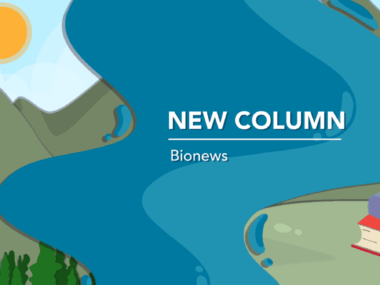2 cases highlight immunotherapy challenges in RDEB-linked cancer
Reports focus on patients with squamous cell carcinoma associated with RDEB
Written by |

Researchers have highlighted the challenges of treating two cases of aggressive squamous cell carcinoma (SCC), a form of skin cancer associated with recessive dystrophic epidermolysis bullosa (RDEB), with immunotherapy when surgery was no longer an option.
One patient, who had many genetic mutations within cancer cells, responded well to immunotherapy, while the other patient’s cancer, with a low mutation rate, progressed during treatment.
Mutations and the immune microenvironment of tumors should be fully characterized to predict therapeutic responses, particularly in aggressive SCC tumors, the research team recommended in the study, “Variable Outcome of Immunotherapy in Advanced Multiple Cutaneous Squamous Cell Carcinomas in Two Patients with Recessive Dystrophic Epidermolysis Bullosa,” published in the journal Acta Dermato-Venereologica.
RDEB is a subtype of EB, a group of disorders characterized by easily damaged skin and painful wounds. RDEB is caused by inherited defects in the COL7A1 gene, which encodes for a portion of type VII collagen. This protein connects the different layers of the skin, anchoring them together.
SCC is a form of cancer that affects the middle and outer layers of the skin and is the most reported type of cancer among people with epidermolysis bullosa. While surgery to remove tumors is a standard treatment option, the growth of multiple tumors and their frequent recurrence can complicate this approach.
Researchers at the University of Freiburg, in Germany, now have described two patients’ cases of advanced SCC associated with RDEB who were treated with immunotherapy after surgery was unable to manage their cancers.
A 36-year-old man with RDEB developed his first SSC lesion on his right hand; the lesion was removed surgically. The tumor recurred twice locally over the following two years, but could not be removed completely. Although amputation was recommended, the patient declined because he wanted to maintain the use of his hand.
Molecular analysis showed he was eligible for anti-PD1 immunotherapy called cemiplimab, brand name Libtayo, due to high levels of targetable immune markers. The therapy blocks the PD-1 protein receptor on immune T-cells, preventing it from interacting with PD-L1 on cancer cells. This allows immune cells to recognize and clear cancer cells more efficiently.
Genetic analysis of SCC tissue
Genetic analysis of SCC tissue also detected mutations in genes known to drive cancer, as well as in those that normally suppress cancer.
Due to the development of a new SCC lesion on his scalp, he also was locally treated with interleukin-2, an immune signaling protein that stimulates the immune system to fight cancer. While signs of the tumor on his hand lessened with treatment, his scalp lesion disappeared. MRI scans showed no indication of the cancer spreading to other body parts.
Additional SCC tumors arose on his foot, right shoulder and arm, but remained stable without signs of progression. One year after starting cemiplimab, he developed a lesion in his esophagus, which had spread to a lymph node. This tumor responded well to radiation therapy, but he died one year later at the age of 42 due to the recurrence of the esophageal tumor.
RDEB in the second patient was more severe, with chronic wound infections and repeated episodes of fever, a narrowing of the esophagus (esophageal stenosis), and body wasting (cachexia).
SSC first occurred on the right elbow at the age of 16, which was followed by several lesions on his right forearm. All tumors were removed entirely by surgery. At 27, the forearm SCC recurred and another large lesion formed on his right foot. While lymph node involvement was suspected, he declined further surgery.
Molecular tests also showed he was eligible for cemiplimab immunotherapy. A genetic assessment found the lesson on his forearm and foot had different mutation profiles. Unlike the first patient, the SCC on his foot had a relatively low mutational rate and low levels of immune markers.
Amputation of leg, surgical removal of lymph nodes
After three months of cemiplimab, the foot lesions grew larger, while the forearm tumor remained stable. As a result, the treatment was stopped, and the patient agreed to undergo an amputation of his right lower leg and surgical removal of lymph nodes.
Tissue analysis confirmed tumors had spread to the lymph node, but the surgery failed to eliminate all signs of cancer. He was then started on second-line anti-cancer therapy and anti-inflammatory medication.
After three months, a surgical wound in the right groin did not heal, and a large SCC developed and spread to the upper left leg. Treatment was discontinued and he died two months later due to complications caused by the open, non-healed wound.
Based on a comparison of these two cases, the researchers suggested a high mutational burden and production of targetable immune markers “may lead to a favourable treatment response to immunotherapy in this group of patients,” they wrote.
“These 2 cases underscore the challenges of cSCC treatment for RDEB,” the team wrote. “Multiple tumours with different molecular and immune profiles occur concomitantly or sequentially, and surgical excision [removal] is not always possible because of the anatomical and tissue constraints imposed by the disease itself.”






